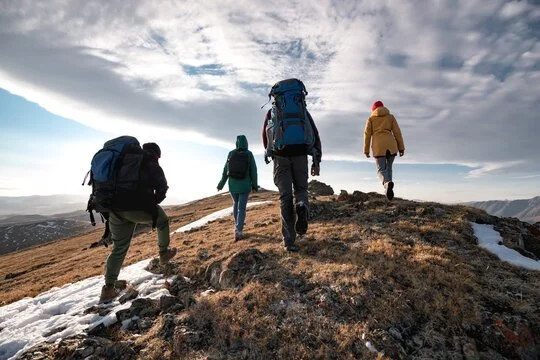Hiking Injury Prevention: Physio Tips Before You Hit the Trails
If you love hiking, you know the joy of reaching the top of a trail and soaking in the view. But one wrong step on uneven ground can lead to a twisted ankle or sore knees — injuries that can keep you off the trails for weeks. That’s why hiking injury prevention is so important. them. One wrong step and you could end up with a painful sprain or tear.
As a physiotherapist, Ioften see hikers come in with ankle sprains, knee pain, and muscle strains that could have been avoided with the right preparation. Below are some easy-to-follow tips to keep your body strong, steady, and injury-free.
Common Hiking Injuries
Ankle sprains – rolling your ankle on rocks or uneven ground.
Knee pain – especially on downhill walks where pressure increases.
Muscle strains – tight calves, quads, or hamstrings from long climbs.
Blisters & foot pain – from poor footwear or long-distance walking.
Physio Tips for Hiking Injury Prevention
1. Strengthen Your Ankles and Legs
Strong legs and ankles give you stability on rocky or uneven trails. Try these exercises:
Calf raises – stand on the edge of a step, rise up on your toes, then lower down slowly.
Single-leg balance – stand on one foot for 30 seconds, progress to standing on a cushion for more challenge.
Squats – build strength in your thighs and hips to protect your knees.
2. Warm Up Before You Start
Just like any sport, hiking puts stress on your body. A quick 5-minute warm-up gets your muscles ready:
Gentle leg swings.
Walking lunges.
Stretching calves and hamstrings.
3. Choose the Right Footwear
Your shoes are your best friend on the trail. Make sure you:
Pick supportive hiking boots with good ankle support.
Wear moisture-wicking socks to reduce blisters.
Replace worn-out shoes — old soles = less grip.
4. Use Poles on Tough Trails
Hiking poles aren’t just for older walkers — they reduce pressure on your knees, improve balance, and help prevent slips on downhill sections.
5. Know Your Limits
Many injuries happen when hikers push too hard, too fast. Build up gradually:
Start with shorter trails and lighter packs.
Take regular breaks.
Stay hydrated to avoid cramps.
What to Do if You Sprain Your Ankle
Even with the best preparation, accidents happen. If you sprain your ankle:
See a physiotherapist for proper rehab. Ignoring an ankle sprain can lead to repeated injuries and long-term weakness.
Hiking should be fun, not painful. By following these simple hiking injury prevention tips, you’ll keep your body strong, steady, and ready to enjoy every trail. And remember — if you’ve had an ankle sprain or ongoing knee pain, visit a physiotherapist. A tailored plan will get you back on track and help prevent future injuries.

